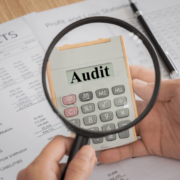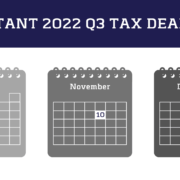Your Business Partnership May Have to Report More Income on Returns
- Discover why you may be taxed on more business partnership income than was distributed to you from the partnership.
- Learn about information returns for business partnerships.
- Find information on basis and distribution rules.
- See an illustrative example regarding cash distributions and basis.
Are you a partner in a business? You may have come across a situation that’s puzzling. In a given year, you may be taxed on more business partnership income than was distributed to you from the partnership in which you’re a partner.
Why does this happen? It’s due to the way business partnerships and partners are taxed. Unlike C corporations, partnerships aren’t subject to income tax. Instead, each partner is taxed on the partnership’s earnings — whether or not they’re distributed. Similarly, if a business partnership has a loss, the loss passes through to the partners. (However, various rules may prevent a partner from currently using his or her share of a partnership’s loss to offset other income.) Fiducial has more information on this topic below!

Pass through your share
While a business partnership isn’t subject to federal income tax, it’s treated as a separate entity for purposes of determining its income, gains, losses, deductions, and credits. This makes it possible to pass through to partners their share of these items.
Business partnerships must file a federal Form 1065. On Schedule K of Form 1065, the business partnership separately identifies income, deductions, credits, and other items. This is so that each partner can properly treat items that are subject to limits or other rules that could affect their correct treatment at the partner’s level. Examples of such items include capital gains and losses, interest expense on investment debts, and charitable contributions. Each partner gets a Schedule K-1 showing his or her share of partnership items.
Basis and distribution rules ensure that partners aren’t taxed twice. A partner’s initial basis in his or her partnership interest (the determination of which varies depending on how the interest was acquired) is increased by his or her share of partnership taxable income. When that income is distributed to partners in cash, they aren’t taxed on the cash if they have sufficient basis. Instead, partners just reduce their basis by the amount of the distribution. What if a cash distribution exceeds a partner’s basis? Then, the excess is taxed to the partner as a gain, which often is a capital gain.
Illustrative example
Two people each contribute $10,000 to form a business partnership. The business partnership has $80,000 of taxable income in the first year, during which it makes no cash distributions to the two partners. Each of them reports $40,000 of taxable income from the partnership as shown on their K-1s. Each has a starting basis of $10,000, which is increased by $40,000 to $50,000. In the second year, the business partnership breaks even (has zero taxable income) and distributes $40,000 to each of the two partners. They receive the cash distribution tax-free. Each of them, however, must reduce the basis in his or her partnership interest from $50,000 to $10,000.
More business partnership rules and limits
The example and details above are an overview and, therefore, don’t cover all the rules. For example, many other events require basis adjustments and there are a host of special rules covering noncash distributions, distributions of securities, liquidating distributions, and other matters. Want to learn more about taxes and business partnerships? Call Fiducial at 1-866-FIDUCIAL or make an appointment at one of our office locations to discuss your situation.
Ready to book an appointment now? Click here. Know someone who might need our services? We love referrals!
For more small business COVID-19 resources, visit Fiducial’s Coronavirus Update Center to find information on SBA loans, tax updates, the Paycheck Protection Program, and paid sick and family leave.









